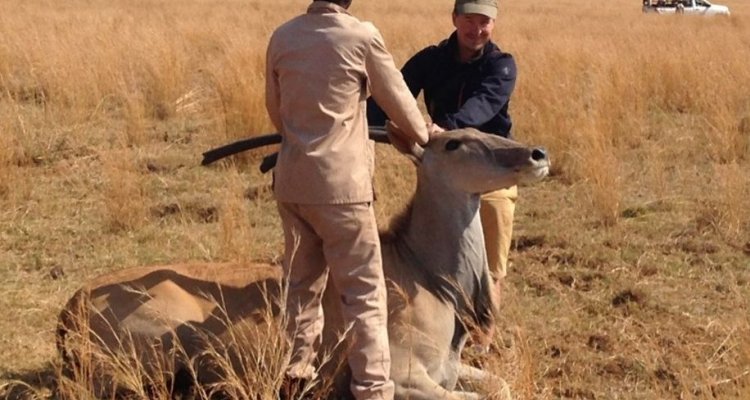
Thesis subject
MSc thesis topic: Movement decision making and habitat selection of eland antelopes
Animal movement is one of the most fascinating topics within ecology, as it provides rare, detailed and measurable insight into animal-environment interactions(1–3).
The fundamental driver of animal movement is optimization of fitness, i.e., the chance to survive in order to reproduce, which for animals translates to satisfying their energy requirements while minimizing energy loss from stressors like resource scarcity, predation and extreme temperatures(2,4–7). As such, animals try to move through the landscape as optimally as possible, but have to base their movement decisions on the limited knowledge these animals have about their environment. Understanding how animals make these decisions and how they perceive their environment is therefore critical to better understand animal-environment interactions.
- Cagnacci, F., Boitani, L., Powell, R. A. & Boyce, M. S. Animal ecology meets GPS-based radiotelemetry: a perfect storm of opportunities and challenges. Philos. Trans. R. Soc. B Biol. Sci. 365, 2157–2162 (2010).
- Nathan, R. et al. A movement ecology paradigm for unifying organismal movement research. Proc. Natl. Acad. Sci. 105, 19052–19059 (2008).
- Nathan, R. et al. Big-data approaches lead to an increased understanding of the ecology of animal movement. Science. 375, eabg1780 (2022).
- Brown, J. S., Laundre, J. W. & Gurung, M. The Ecology of Fear: Optimal Foraging, Game Theory, and Trophic Interactions. J. Mammal. 80, 385–399 (1999).
- Cattarino, L., McAlpine, C. A. & Rhodes, J. R. Spatial scale and movement behaviour traits control the impacts of habitat fragmentation on individual fitness. J. Anim. Ecol. 85, 168–177 (2016).
- Boyers, M., Parrini, F., Owen-Smith, N., Erasmus, B. F. N. & Hetem, R. S. Contrasting capabilities of two ungulate species to cope with extremes of aridity. Sci. Rep. 11, 4216 (2021).
- Street, G. M. et al. Habitat functional response mitigates reduced foraging opportunity: implications for animal fitness and space use. Landsc. Ecol. 31, 1939–1953 (2016).
30 eland antelopes were introduced into a 12 km2 fenced reserve in South Africa. These animals were introduced into this novel area in three separate batches (June, August and October 2017) and outfitted with GNSS trackers to record their locations at ~10min intervals for 0.5-0.75 years. When combining their location data with high resolution spatial data from the terrain and vegetation, it allows for a close examination about how animals make their movement decision based on landscape characteristics. Furthermore, it provides insight into how their decisions evolve over time, and therefore how animals learn to perceive their environment over time.
Relevance to research/projects at GRS or other groups
Collaboration with Wildlife Ecology and Conservation Group (co-supervisor: Henjo de Knegt), see: https://www.wur.nl/en/project/smartparks-using-technology-for-anti-poaching.htm
Objectives and Research questions
- Explore and visualize animal movement characteristics over time
- Compute energy landscapes and habitat suitability maps
- Link movement decision of animals to the landscape using e.g. step selection functions
- Analyse and interpret the effect of the animals’ memory on the spatial and temporal scale at which they make their decisions
Requirements
- Programming experience (R or Python)
- Preferably experience with movement analyses
Literature and information
- Cagnacci, F., Boitani, L., Powell, R. A. & Boyce, M. S. Animal ecology meets GPS-based radiotelemetry: a perfect storm of opportunities and challenges. Philos. Trans. R. Soc. B Biol. Sci. 365, 2157–2162 (2010).
- Nathan, R. et al. A movement ecology paradigm for unifying organismal movement research. Proc. Natl. Acad. Sci. 105, 19052–19059 (2008).
- Nathan, R. et al. Big-data approaches lead to an increased understanding of the ecology of animal movement. Science. 375, eabg1780 (2022).
Expected reading list before starting the thesis research
de Knegt, H. J., Eikelboom, J. A. J., van Langevelde, F., Spruyt, W. F. & Prins, H. H. T. Timely poacher detection and localization using sentinel animal movement. Sci. Rep. 11, 4596 (2021).
Theme(s): Modelling & visualisation